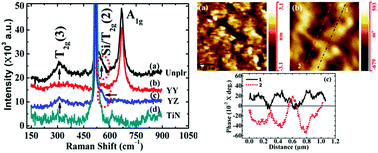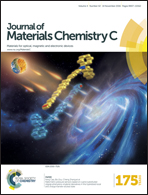Anti-phase boundary free two-dimensional epitaxial Fe3O4 thin films: evidence of an unquenched orbital magnetic moment at room temperature
Abstract
Two-dimensional (2-D) epitaxial ferrimagnetic Fe3O4 thin films are attractive choices for the next generation of spin devices due to their half-metallicity, high Curie temperature and high electrical conductivity. Despite having profound spin device compatibility, the use of Fe3O4 thin films has not been exploited to date due to the presence of a magnetic disorder known as anti-phase boundaries (APBs). Here we demonstrate the growth of 2D single crystalline APB free Fe3O4(100) thin films on TiN buffered Si(100). The epitaxial orientation relationship, Si(400)//TiN(200)//Fe3O4(400), was confirmed by reflection high-energy electron diffraction and polarized Raman analysis. The Fe3O4(100) thin films possess large in-plane magnetic domains in its remanent magnetization state and cubic in-plane magnetic anisotropy as confirmed using magnetic force microscopy and magneto-optic Kerr effect measurements, respectively. The orbital to spin angular moment ratio, ml/ms = 0.144, and the total magnetic moment extracted from X-ray magnetism circular dichroism (XMCD) measurements are close to the corresponding bulk value.


 Please wait while we load your content...
Please wait while we load your content...